
UNICEF
Share a Meal, Share a Smile: Together, We Can End Hunger!
Introduction
Together, Let’s Fill Little Bellies
Figma
Adobe Illustrator
Adobe Photoshop
Tools
Role
UI/UX Designer
10 weeks
Timeline
Nutrition is essential
for children's well-being
Welcome to U-dashboard, where we believe every child deserves a healthy start in life. Along with UNICEF, let’s get on mission to combat childhood hunger and malnutrition. Our goal is simple yet profound: to ensure that no child goes to bed hungry.
Together, with your support, we can make a lasting difference in the lives of vulnerable children around the globe. We work tirelessly to provide nutritious food to those who need it most, and together, let's build a brighter, healthier future for children everywhere.
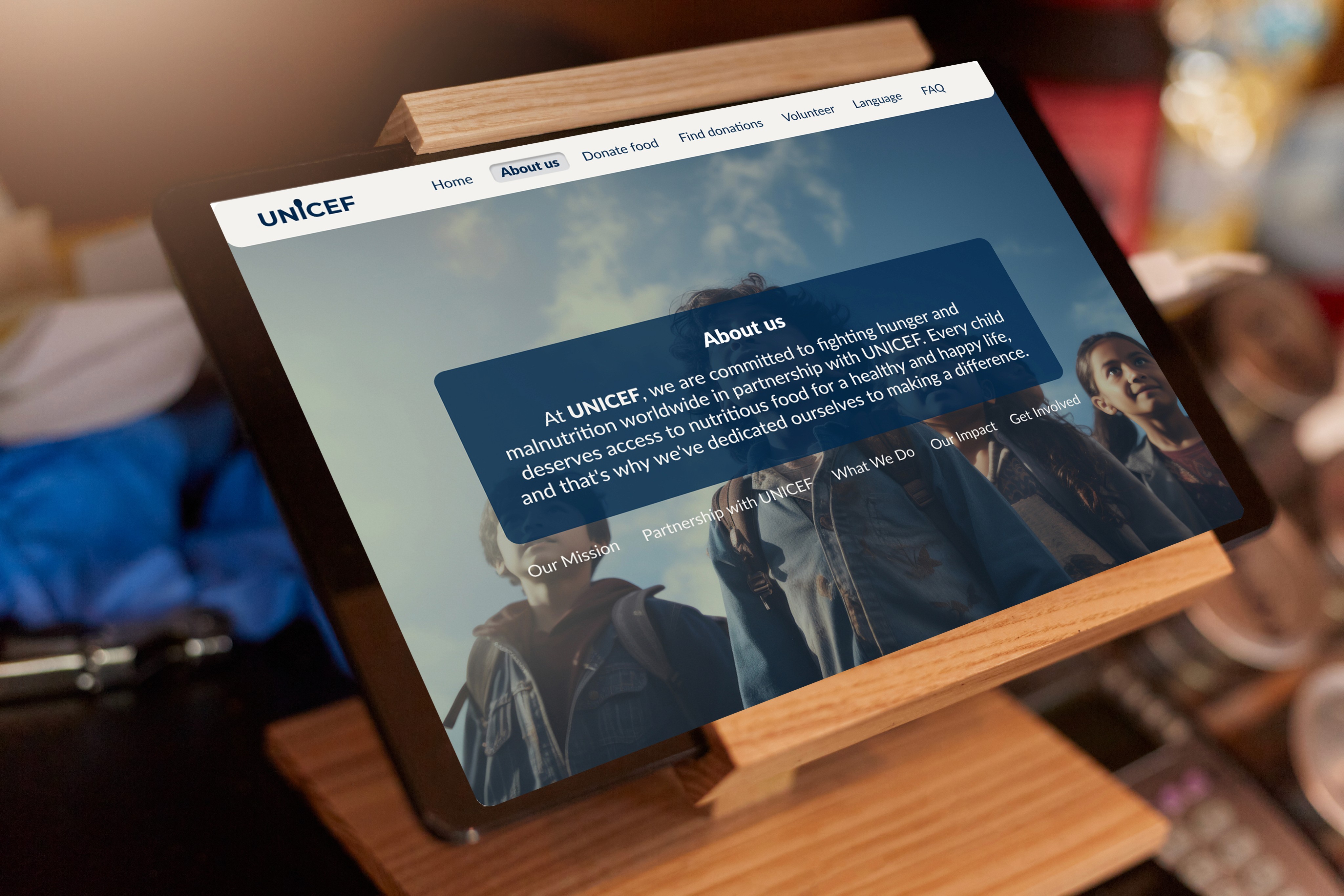
“Donations for children have dropped recently. It's important to understand why this is happening so we can take action.”
Discovering the problem
A decline in donations for children has been observed, raising concerns about charitable giving trends. Understanding the reasons behind this decrease is essential to ensure the continued support and well-being of vulnerable children in our communities.
Addressing these factors is crucial for sustaining efforts to provide necessary assistance and resources to those in need.
"Despite ongoing efforts to address childhood hunger and malnutrition, there has been a noticeable decline in donations specifically targeted towards children in recent years. This trend raises concerns about the sustainability of support for vulnerable children and underscores the need to understand and address the underlying factors contributing to this decline."
The Problem Statement
Approximately 45 million young children across the globe suffer from severe malnutrition each year – that’s nearly one out of every three children under 5 years of age.
People often donate small amounts, but lack
updates on the impact of their contribution. This lack of information leaves donors unaware of how their donations are utilized and the difference they make, potentially discouraging further engagement and support for the cause.
Currently

Why do people do not trust the donations anymore and why did they stopped donating?
Trust Issues
Concerns about how donations are managed and whether they reach the intended beneficiaries can deter potential donors
Skepticism about Impact
Some people may doubt the effectiveness of their donations in making a tangible difference in addressing childhood hunger and malnutrition
Misinformation
Misconceptions or lack of accurate information about the extent of the problem or the efficacy of aid efforts may discourage donations
Lack of Awareness
Some people may simply not be aware of the extent of the problem of childhood hunger or how their donations can help address it
User Persona
Strategy
Target Audience
Advertisement Concepts
Kiosk Placement
Sarah Johnson
Sarah Johnson, a 32-year-old elementary school teacher and owner of a kid's clothing brand, is driven by a deep compassion for children in need. Believing strongly in the importance of providing every child with a chance at a healthy and happy life, Sarah seeks convenient and reliable ways to contribute to organizations supporting children.
Despite her busy schedule, Sarah is committed to efficiency in her philanthropic efforts, aiming to seamlessly integrate her contributions into her daily routine. Her overarching goal is to actively participate in improving children's lives by providing them with essential food and nutrients while also finding creative ways to deliver positive messages and inspire them to become compassionate individuals who help others.
To solve the concern of declining donations due to donors being unaware of how their contributions are utilized, the key is to provide clear and regular updates. By keeping donors informed about where their donations go and how they are being used, we can build trust and encourage continued support for important initiatives like nutrition services to prevent child deaths.
Consumers who dine at cafes/restaurants and shop at grocery stores.
Young Adults (18 - 26) and Adults (27 - 45).
Raising awareness about feeding impoverished individuals is a universal concern that can resonate with people across all age ranges.
Together, Let's Fill Little Bellies: Little kids consuming healthy food.
Kids Can Help Too: Children Holding Food Items, Encouraging them for Donations.
Fill the Table, Fill the Heart: A Poster Featuring a Table Overflowing with Food,
Encouraging Food Donations.
Food for Thought: A Poster Combining Images of Food sharing with others.
Give What You Can: Measuring Cup Filled with Food, Every Bit Matters.
No Child Should Go Hungry: Show how to help Provide Meals for Kids
Be a Hunger Hero: A child eating healthy/nutritious fruit.
Plates of Plenty: Overflowing Plate? Urging Donation goes to kids.
End Hunger, One Meal at a Time: Progress Bar of previous Donations.
A Full Plate, A Fuller Heart: Overflowing Plate? Donate Today!
Grocery Stores
Cafe and Restaurants
Children Playgrounds
-Sarah
"Every child deserves a seat at the table. Let's feed their potential."


Logo Iterations

1FA0D9
C0E6F9
89ABD9
E6E0D4
F0F1F3
Color Palette
Style guide
Advertisement Concepts
Positioning Brainstorming
The donation kiosk is strategically placed at grocery stores, cafes/restaurants, and children's playgrounds to maximize visibility and accessibility to potential donors. These high-traffic locations provide convenient opportunities for individuals and families to contribute to charitable causes while going about their daily routines. Whether picking up groceries, enjoying a meal out, or spending time with their children, donors are encouraged to support worthy initiatives, fostering a culture of giving within the community
FIND US AT ANY CAFE’S AND RESTAURANTS
FIND US AT ANY CAFETERIAS


Typography: Helvetica
Heading 1: 64px
Heading 2: 48 px
Body Text: 36px
Light
Regular
Bold
Light Oblique
Oblique
Bold Oblique
ABCDEFGHIJKLMNOPQRSTUVWXYZ
abcdefghijklmnopqrstuvwxyz
1234567890-=!@#$%^&*()_+
Normal
Hover
Button
Button
Button
Button
Button
Button
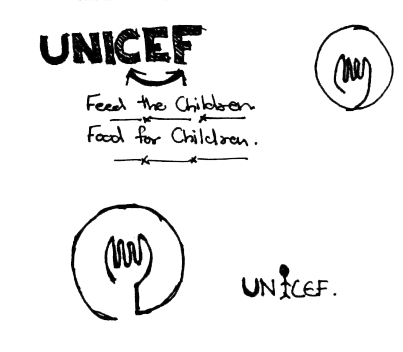



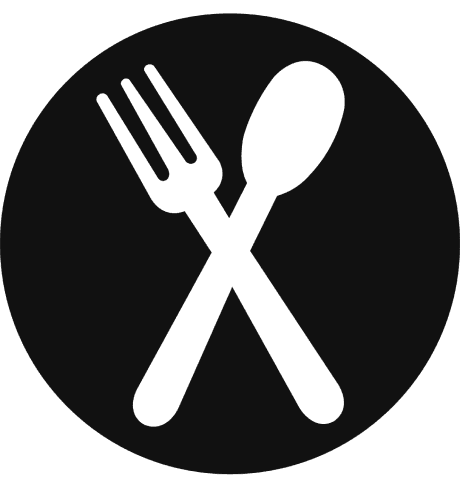


UNICEF
UNICEF



Poster Creation
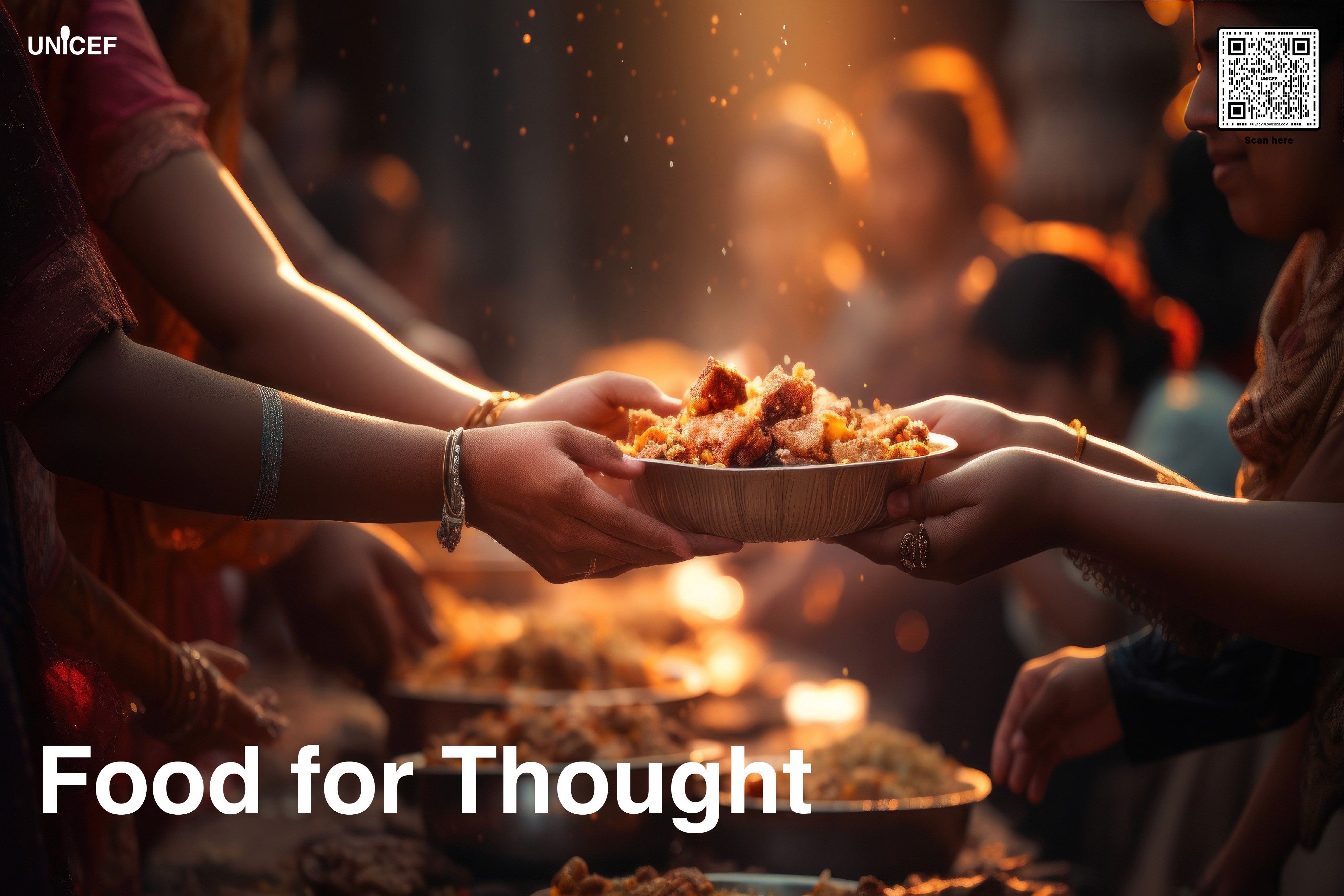


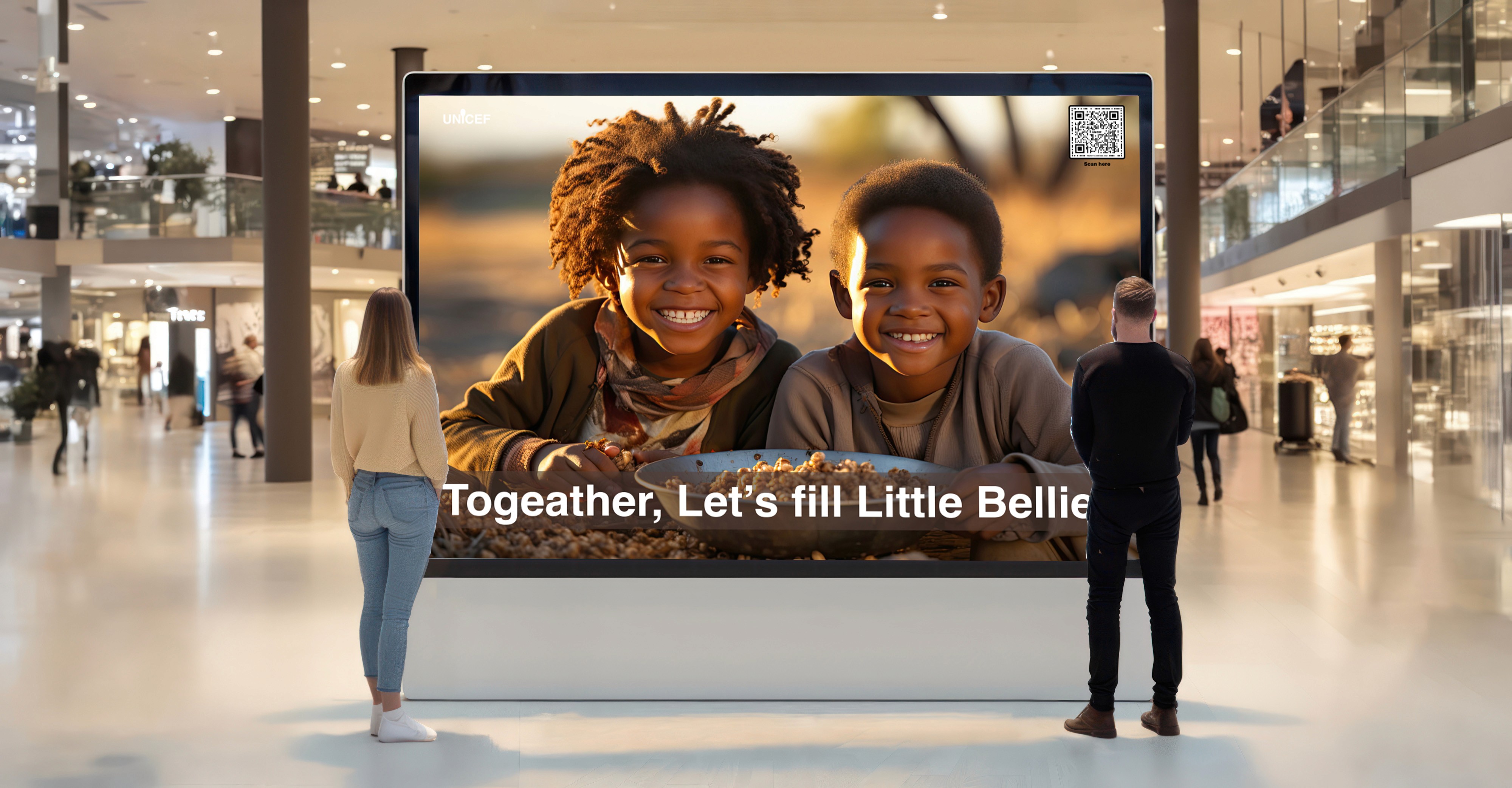

Together, Let's Fill Little Bellies: Little kids consuming healthy food.
Food for Thought: A Poster Combining Images of Food sharing with others.
Be a Hunger Hero: A child eating healthy/nutritious fruit.
Conclusion
The incorporation of features like receiving updates on donation usage within the donation kiosk flow highlights a crucial aspect: individuals are notably more inclined to donate when they have visibility into how their contributions directly benefit those in need. This underscores the significance of transparency and communication in fostering trust and engagement, ultimately leading to greater support for UNICEF.
87% of individuals were more inclined to donate when provided with transparency on how their contributions directly benefit children in need.

